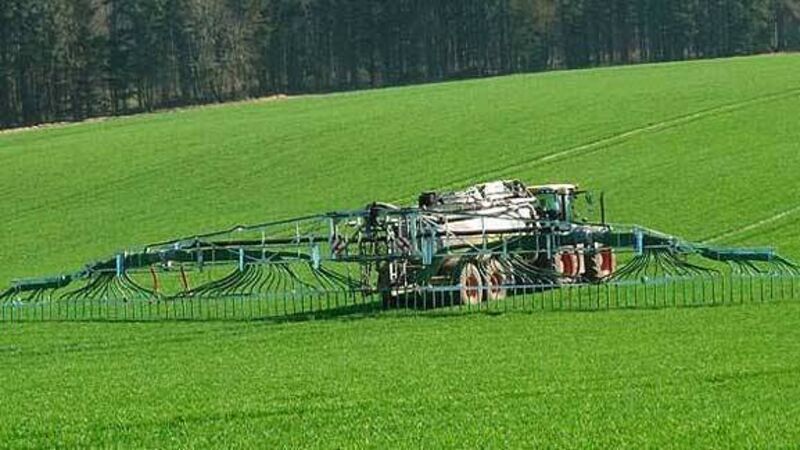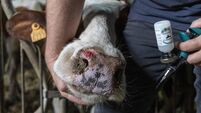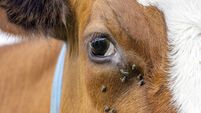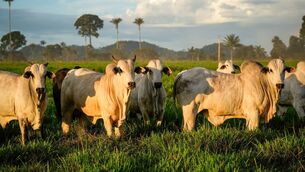Nitrates regulations must be followed

If you are in the Single Payment Scheme, not only will you be breaking the law if you do not follow the regulations, you will also be putting your Single Payment, Disadvantaged Area, REPS and AEOS payments at risk.
>> Livestock manures and other organic fertilisers contain nitrogen and phosphorus. If too much of these get into water, it is bad for water quality.
>> You must not spread livestock manure and slurry containing more than 170 kgs of nitrogen per hectare in a year.
There are prohibited periods when you must not spread any fertiliser at all on your land, either organic or chemical. The regulations divide the country into three zones.
In each zone, there are different rules about the storage capacity that farmers need for organic fertiliser, and about the times of the year when organic and chemical fertilisers must not be spread on land.
You must not spread more fertiliser than your crops need.
The maximum fertilisation rates are set out in the regulations.
You must follow the rules about ploughing and applying non-selective herbicides.
You must keep full records, including what fertilisers you bring onto your holding or send out of it. You have to keep records for each calendar year, and have them ready by Mar 31 of the following year.
You will already have most of this information on your Single Payment application, stock registers and AIMS profiles.
You must divert all clean water from roofs, from clean yards, or from higher ground to a clean water outfall.
If soiled water is stored with slurry, or mixes with slurry, then it is subject to the same regulations as slurry.
Until you are ready to apply them to land, you must collect all organic fertilisers (which include slurry, farm-yard manure, sewage sludge, industrial sludges, etc), effluents and soiled waters produced in buildings and yards, to prevent runoff or seepage into groundwaters or surface water.
You must have enough storage capacity as required by the regulations. Spreading fertilisers is also forbidden outside of the prohibited spreading periods, if weather or ground conditions are unsuitable and there is a risk that the nutrients in the fertilisers might run off into surface water or groundwater.
Therefore, you must have enough spare capacity to allow for bad weather.
All storage facilities must be kept leak-proof and structurally sound.
>> A dairy cow produces 0.33 cubic metres of slurry per week.
Using the slurry figure for each category of livestock, and the number of weeks of storage in your zone, you can calculate the storage capacity required, and then add how much extra you need for rainfall and soiled water draining into the tanks.
You must have 200mm free-board (above the slurry level) in all covered tanks, and 300mm in uncovered tanks.
If you do not have enough slurry capacity, one solution is straw bedding or other absorbent bedding material. (For example, for cattle, or wood shavings or chopped straw for broilers).
This type of housing must have leak proof concrete flooring and any runoff must be collected.
Or less capacity may be needed, if (with the exception of dairy cows) livestock are outwintered at any time during the prohibited spreading period, subject to outwintering rules.
The general rule for pig manure is that you need 26 weeks’ storage capacity. Another way of reducing the storage requirement is a contract for storage outside your holding, or with a treatment facility for processing manure or waste disposal. You must have enough storage for silage effluent also.
>> Livestock manure applied to your land in a calendar year must not contain more than 170 kgs of nitrogen to the hectare. Organic and chemical fertiliser combined must not be more than the crops need (this includes grass).
>> The vast majority of holdings are under the 170kg limit. Nitrogen and phosphorus statements available on the Department’s website to all registered users will give you a clear indication of your livestock manure nitrogen status.
When you add in the information about any other livestock that you may have, you will be able to work out how much nitrogen and phosphorus you are allowed to spread.
>> If you want to farm above this limit, you may need to apply for a nitrates derogation (up to a limit of 250 kgs of nitrogen per hectare per year).
When you are working out how much phosphorus you can spread, you must count in the phosphorus coming from concentrates fed to your grazing livestock in the previous year.










